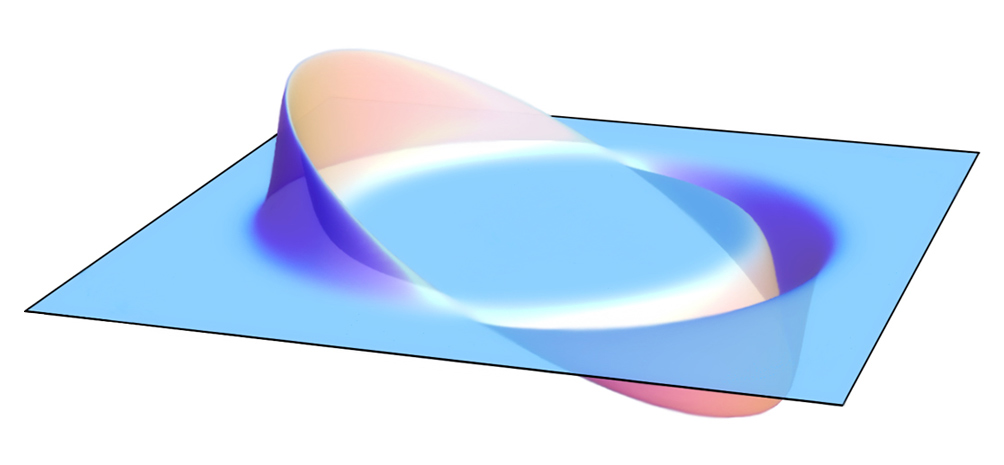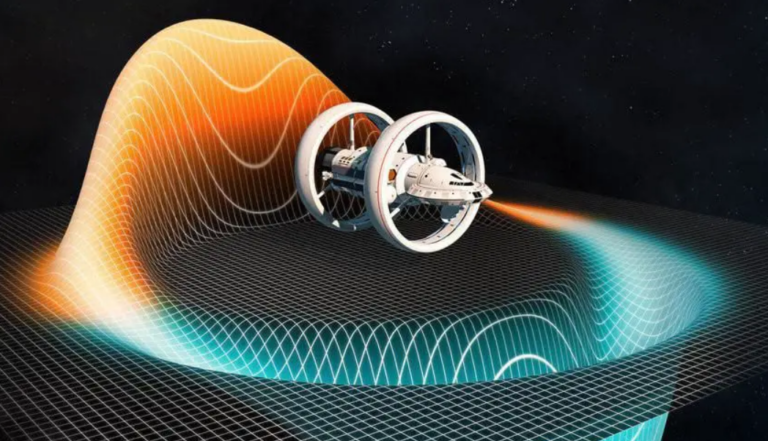Researchers have created a fresh design for a warp drive that relies on traditional physics principles.
Warp drive technology is currently in an explosive stage. Experts have recently revealed the first prototype of the warp drive, which is considered to be the possibility of space travel. This revolutionary advancement in technology would allow humanity to control the spacetime continuum and reach for the stars. In another boost, an astrophysicist has made another stunning discovery having to do with warp drives. Even in the past years, the idea of traveling at faster than the speed of light has been prevented by scientists using theories based on strange physics and extraterrestrial material. But what has created a stir is a theoretical warp drive design provided by Erik Lentz from Göttingen University as described in a recent paper.
The new idea of warped space, according to Lentz, does not require the use of exotic matter as was the case before to construct such a structure. To add some perspective, the term ‘warp drive’ is a creation of science fiction franchise known as Star Trek. In this fictional universe, the Federation’s faster than light FTL warp drive is achieved by propulsion floored on matter-antimatter annihilation. As per understanding of Star Trek, this immense power enables the starship to move at a speed more than light.
Space is very vast and it might be difficult for an individual to even imagine, therefore coming across something such as the warp drive is something that is very appealing. The nearest star system to the Solar System is Alpha Centauri, it is beyond imagination where a traditional rocket using chemical propulsion will take thousands of years to cover the distance. Even if we were able to move at this speed, a one trip will take four years; this dwarfs our scientific and technological understanding of the universe. Hypothetically, even if future society collectively decides to build a spacecraft, it will assuredly cannot travel between star systems in the absence of the aforementioned warp drive.
The concept of warping was first discussed in 1994 by Miguel Alcubierre, a theoretical physicist, and he came up with the Alcubierre drive. It has been successfully designed to facilitate space travel that is faster than the speed of light, thus conforming to the principles of general relativity.
According to the theory put forward by Mexican physicist Miguel Alcubierre, it is possible to travel faster than light, but not without having a speed relative to the fabric of space-time; in fact, what is proposed is the space-time expansion behind the spacecraft and at the same time the contraction in front of the vehicle.

An Alcubierre drive works the way in which it is possible to apply great energy to the space-time for worm hole creation. Still, if the universe is assumed to be infinite there would not be enough energy needed to provide the required energy. Within this rig, there would be a reference frame wherein appropriate acceleration is not felt by individuals staying inside the bubble they create. Even though the inner reality would be governed by regular laws of physics, space as the environment would not have any influence upon the ship.
However, Lentz has suggested an entirely different solution in his recent article in the scientific peer reviewed journal titled Classical and Quantum Gravity. He proposes a new way of arranging space and time to build a warp drive without using the exotic matter or unidentifying of kinds of energy. Lentz identified other forms of spacetime bubbles in the original physics equations that had not been previously recognized, which are similar to solitons, waves with compact characteristics that have fixed speed and shape. Lentz was able solve out for the misconception by using Einstein’s equations to go through different soliton configurations and then arrived at a solution that could be sustained by conventional sources of energy and does not entail exotic forms of matter.

According to a statement from Lentz, “this work has moved the problem of faster-than-light travel one step away from theoretical research in fundamental physics and closer to engineering.”
“The next step is to figure out how to bring down the astronomical amount of energy needed to within the range of today’s technologies, such as a large modern nuclear fission power plant. Then we can talk about building the first prototypes.”
The high amount of energy needed to distort spacetime for FTL travel has not been eliminated, and Lentz’s warp bubble does not consider this problem.
Lentz asserts that it would take about one hundred times the energy of Jupiter’s mass to create a warp bubble for a spacecraft with the width of 656 feet moving at light speeds. This is roughly 30 orders of magnitude higher than the power produced by the modern nuclear reactors. However, according to Lentz, previous research has suggested putting forward energy-saving mechanisms that could reduce energy requirement to up to 59 orders lower.
In the meantime, Lentz proposes searching for positive-energy solitons within the plasmas near magnetic neutron stars.
In a related development, researchers at Applied Physics’ Advanced Propulsion Lab (APL) have unveiled what they claim is the first physical warp drive model in Classical and Quantum Gravity. This model like Lentz’s research does not support the idea that negative forces are needed for warp speed travel.
Unlike the existing paradigm, which is negative energy, the APL concept has floating bubbles of spacetime and not floating ships. Even though Alcubierre has endorsed this model, it is a concept that is still firmly ensconced in the land of the far future, of ideas yet to be figured out as to how they might be practically fashioned.The scientists at APL write:
The method our work suggests for building such objects is based on fully understood laws of physics, even though the mass requirements required for such modifications are still enormous at this time.
Hopefully, the “far future” won’t be as far off as it seems. That may be the case if scientists continue to make breakthroughs in warp drive technology.
Do not forget to share your opinion with us to provide you with the best posts !




0 Comments